- Administrator
- Albums and Singles
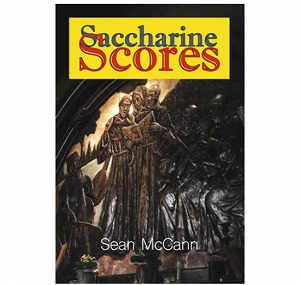
An album/artbook documenting Sean McCann’s recent chamber compositions. Ranging from the 10-person ensemble performance of "Portraits of Friars" at Fylkingen, Stockholm in February 2018, to his first quartet piece "Victorian Wind"performed in Toronto in 2014. McCann’s scores leak pastoral and bizarre passages, dancing in the banal beauty of sound poetry. The performances feature guest musicians Sarah Davachi, Zachary Paul, Geneva Skeen, Celia Eydeland, Maxwell August Croy and more.
The book holds in-depth scores, program notes, and photography by McCann. A lovely compliment to finger through while you lay down to listen to the disc. It holds text and imagery from the pieces, along with musical notation.
The notes for "Pistons" follow here:
I assembled this piece while wanting to make my life of leisure and gluttony in London somehow artistic. I was in London for a week or ten days in October 2017 for a business trip. I love London. I love doing two things at a time or more. So it worked out.I find I have a hard time enjoying anything unless I am multitasking. For example right now as I type this description I am also drinking old coffee with ice-cubes in it, exporting a master from Pro-Tools downstairs, and watching Friday the 13th: A New Beginning on the television set.
So in this British multitasking I decided to work on a piece of music while indulging in food and drink roaming around London. I was also reading Baudelaire’s Les Fleurs du mal during these outings (talk about sentimental). Some elements of those poems crept their way, drawn out of order, into Celia’s singing text.
As with all my compositions to this point, they are left open to interpretation – no real meaning, just flickers of settings and emotions.
The taste of everything below (the score) spawned thoughts of colors and elements and people and emotions, though with the text I decided to keep it simply about the food and the beverages. The romantic music and singing is the rendering of the emotions I felt, while my banal reading was the actual act of consumption. I recorded the text while lying down in my childhood bedroom in Goleta, California. Half asleep just trying to get it over with. A fitting situation for the piece: forced beauty.
"I had the great pleasure to perform on two of the pieces within this unique collection of Sean’s work. What I admire most about Sean’s process is his ability to synthesize various prosaic experiences of day-to-day life so delicately and so beautifully within numerous contexts – music, speech, sound, text, visual imagery, and physical space. Although these four works each offer a particular frame to an indefinite moment, they are united in my mind by a sort of latent simplicity. Their classical orientation is unconventional – it is not the pastoral mechanism at work here per se, but rather the lingering aftertaste of a place and a time, unfolding in a decidedly visceral manner. Hearing these works again in their recorded format, I am reminded of the deliberate hand behind the composition, and the careful pacing and placement of the musical experience here, both as it manifests in the player’s awareness and as it is quietly subsumed into the elegant folds of the collective whole." -Sarah Davachi
More information can be found here.
Read More
- Administrator
- Albums and Singles

Distant Animals is the artistic output of Daniel Alexander Hignell, a researcher and sound, video and performance artist from South East England. Hignell has developed a practice indebted to political and participatory resonance of creative acts, interrogating notions of autonomy, collaboration, and the tension between sense (what is perceived by the senses) and sense (what is made sensible by the community). He has recorded, written, performed and researched numerous socially-oriented sound works across Europe, often choosing to work with a diverse range of collaborators, including visual artists, choreographers, theologians, lawyers, and political activists.
In 2017 he completed an AHRC-funded doctorate in composition exploring the social function of art-making, of which Lines constitutes the first of several sonic responses. Inspired by a 130-page text-score, and performed upon a modular synthesizer, the work explores participatory approaches to performance, utilizing text that leads its performer to undertake emergent and evolutionary changes in timbre and rhythm over extended time periods.
Drawing upon the works of La Monte Young, Morton Feldman, Eleh, and Mauricio Kagel, the album employs a highly conceptual approach to its genre, incorporating the notion of the drone as both a compositional method, a spiritual approach, and a participatory tool for engaging its audience. Although ostensibly a musical work, the movements and relations the score invokes are designed so as to be applicable to any context - mowing the lawn, fixing the sink, having an argument, or even going for a walk. It is from this diversity that the musical content is born – as the work is constructed via site-specific interpretations of the scores core text, passages are invoked not to arrive at a specific musical point, but as a means of a more general rumination, an engagement with the works ecological context that encourages slow, emergent phrases that unfold over time.
With this open-ended approach to composition, Lines relies on conceptually rich sonic phrases, exploring over its length both the purity of a musical tapestry that amounts to little more than a complexly modulated square wave - often pushing the filters that shape it to near breaking-point - and the rhythmic dissonance of the voice, noise, and distorted bells that erupt violently from it as the work progresses.
The album contains a pack of 4 postcards, documenting a land-art intervention undertaken during the creation of the score. Included in each pack is an individually hand-stamped and numbered print, created by inclusive artist Layla Tully, and responding to the album's central theme - materiality, substance, emergence, and the process of 'line-making.'
More information can be found here.
Read More
- Administrator
- Albums and Singles
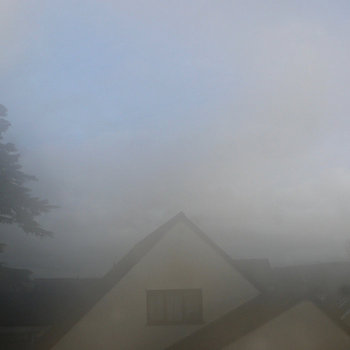
This Is Where is the collaborative project of Algis Kizys, Norman Westberg and Lynn Wright. Having previously released a limited edition cassette tape in 2016 under the name of ALN, their self-titled album for Hallow Ground is to be considered the three-piece's definite studio debut as This Is Where.
Recorded and mixed by Kizys, This Is Where delves even deeper into the psychedelic and at times cosmic drone sound previously to be heard in the New York City-based trio's live recordings. As a logical next step after what the Swans guitarist Westberg has presented on recent solo albums like The All Most Quiet for Hallow Ground, it integrates three distinct musical visions into a whirling ocean of sound.
This Is Where's sound is neither dominated by the thundering brutalism of Swans - where also Kizys took over bass duties for a while - nor the gloomy Doom Pop of Wright's Bee and Flower. Instead Kizys, Westberg and Wright use delay, reverb and effects to weave a pulsating web of sonic textures, moving effortlessly from dark depths to almost jubilant high notes. With Kizy's roaring bass guitar as a sonic backdrop, Westberg and Wright give rise to a musical dialogue marked by density and tension.
Over the course of 40 minutes, This Is Where create a mesmerizing musical experience, divided into four discrete movements. This Is Where is a blissful journey through space, time and most of all a yet unheard-of approach to guitar-driven drone and ambient music.
More information can be found here.
Read More
- Administrator
- Albums and Singles

Since 2016 we’ve been blessed with Mike Cooper in our catalog. The first installment was New Kiribati, revisiting a self-released 1999 CDR in which Mike Cooper was experimenting with a lap steel, electronics, prepared guitar and live recordings, creating what he called “Ambient Exotica Soundscapes”. In the following year, Reluctant Swimmer showed an enigmatic, exotic and elegant adventure into Mike's 1920s National tri-plate lap steel guitar and his Vietnamese electric lap steel. Two pieces, two sides, each ending with beautiful interpretations of some Mike’s favorite songs, "Movies Is Magic" by Van Dyke Parks and Fred Neil's "Dolphins."
2018 and it's time for some new discoveries into Mike Cooper's limitless exploration in his collection of guitars. The title itself, "Tropical Gothic” references Cooper's beloved areas of 'the South' with a Gothic, dark, remote interplay... Tropical Gothic includes, but is by no means limited to, a reflection on a region where European colonial powers fought intensively against indigenous populations and against each other for control of land and resources.’
In each side Mike Cooper studies different approaches to his method of uniting guitar and field recordings into a constant stream of sound, where he delivers chaos and melody – not necessarily in that order. Side A is composed of shorter pieces. Each of them offers a myriad of images and sensations, between the enigmatic and terror ("The Pit"), joy, happiness and freedom ("Running Naked") or pure contemplation ("Onibaba").
"Onibaba" runs as a fitting introduction to Side B and its 18-minute magical piece "Lelong & Gods Of Bali." A mix of ambient exotica music, silent film soundtrack and distorted rhythms that dance around Mike's guitar. It keeps reinventing and transforming itself throughout those eighteen minutes, summing up the dexterity and muscle of Mike Cooper's music of the last two decades.
More information can be found here.
Read More
- Creaig Dunton
- Albums and Singles
 Brainwashed and Holodeck Records are happy to present Omni Gardens' "Dreams of Neptune Healers", from the forthcoming album West Coast Escapism. Omni Gardens is the new solo project from Moon Glyph founder Steve Rosborough, and his first release under the name. "Dreams of Neptune Healers" hints at the full album to come with its slowly unfolding synth pads and lighter, melodic passages that slowly bubble to the surface. A multitude of twinkling melodies floating by in gauzy drifts herald a deeply introspective album that captivates the ears as much as it does the subconscious. West Coast Escapism comes out on September 28th on cassette and digital via Holodeck Records. Preorder at holodeckrecords.com.
Brainwashed and Holodeck Records are happy to present Omni Gardens' "Dreams of Neptune Healers", from the forthcoming album West Coast Escapism. Omni Gardens is the new solo project from Moon Glyph founder Steve Rosborough, and his first release under the name. "Dreams of Neptune Healers" hints at the full album to come with its slowly unfolding synth pads and lighter, melodic passages that slowly bubble to the surface. A multitude of twinkling melodies floating by in gauzy drifts herald a deeply introspective album that captivates the ears as much as it does the subconscious. West Coast Escapism comes out on September 28th on cassette and digital via Holodeck Records. Preorder at holodeckrecords.com.
 
Read More
- Administrator
- Albums and Singles
 For their third album, the duo of Stanislao Lesnoj (saxophone, electronics) and SmZ (drums, electronics) work effortlessly to achieve the state described by the album title: a precarious mix of vastly differing instrumentation and genres that end up complementing one another quite effectively. The final product largely straddles that unlikely line between jazz and abstract electronica, but in a way that comes across as unique and fresh.
For their third album, the duo of Stanislao Lesnoj (saxophone, electronics) and SmZ (drums, electronics) work effortlessly to achieve the state described by the album title: a precarious mix of vastly differing instrumentation and genres that end up complementing one another quite effectively. The final product largely straddles that unlikely line between jazz and abstract electronica, but in a way that comes across as unique and fresh.
There might be two organic instruments listed in the credits—saxophone and drums—but the former is utilized much more alongside the electronic performances, which vary drastically from conventional synth work to dissonant, noisy textures.The title piece that opens the album exemplifies this:a bit of captured electrical interference sets the stage as the duo later meld their work into a skittering electronic sound, all of which remains rather non-organic for the most part.However, Lesnoj's saxophone soon glides into the mix, with an unabashedly jazzy tone to it, and also an organic additionThe performance is a restrained one, more restrained than I would have anticipated from a horn/electronic combination arrangement, but it works well.
The sax performance on "Pulsing" is even calmer, at times leading the song into a cyber-smooth jazz hybrid that stays on the right side of tasteful with the inclusion of lush synth strings and light metallic percussion.Similarly, "Whisper" is built largely on traditionally jazz influenced horns and what best resembles a digital vibraphone, with a bit of static-heavy, distorted production to ensure a unique final product.Electronic detritus and sax also figure heavily into the rather stripped down "Being", but the limited amount of instrumentation is produced so well as to bring out every detail of what is going on.
Ozmotic do not simply stay in this specific framework of jazz and electronics, however.For "Hum" the duo work within a nicely spacious mix, blending a mixture of twinkling synths, naturally captured bird songs and other less specific organic elements.The elongated strings and treated choirs that appear later flesh out the song even more, bolstering the organic side of the elusive balance.At first, "Lymph" has a similarly open space that leads to a lighter, more chilled out mood, but that shifts as the duo adds in multiple layers of twittering electronics and even some erratic, distorted drum beats (which could be organic or synthetic) come stammering through to give an added dimension to an already complex work.The album closer "Insecting" has the pair pushing their sound into even more distorted and slightly harsh territory.Shimmering sounds and a minimalist arrangement set the stage at the piece’s opening.Soon crackling passages and disjointed electronics blend in, giving a more chaotic and roughened edge to the composition.Eventually rich synth pads are added to the equation, contrasting the dissonant stuff with a bit more pleasant tone before ending the piece abruptly.
Elusive Balance is a fitting name for this record, because that is exactly what Ozmotic manages to strike within its seven songs.Their sound is all about equilibrium, with clean tone and distortion, organic and digital, and chaos and order all appearing equally throughout the album, sometimes all within the same single piece.Those combinations are just what makes the album so great and memorable though, because while it is a beautiful work from first listen, there are so many more facets to it that can be heard with each subsequent spin.
samples:
 
Read More
- Administrator
- Albums and Singles
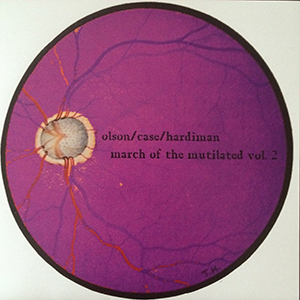 In what has become a yearly tradition, Wolf Eyes member and meme master John Olson again hooks up with Upstate NY's Eric Hardiman and Jeff Case to deliver two more discs of psy jazz/free improv/whatever sessions from Case's basement studios. The progression throughout these latest two installments of the March of the Mutilated series is indicative of a clear trajectory, with the trio keeping some things constant, but also a significant amount of change, evolution, and hints at what may be to come during the holiday season of 2018.
In what has become a yearly tradition, Wolf Eyes member and meme master John Olson again hooks up with Upstate NY's Eric Hardiman and Jeff Case to deliver two more discs of psy jazz/free improv/whatever sessions from Case's basement studios. The progression throughout these latest two installments of the March of the Mutilated series is indicative of a clear trajectory, with the trio keeping some things constant, but also a significant amount of change, evolution, and hints at what may be to come during the holiday season of 2018.
Volume 2, recorded at the same time as the first in 2016, consists of two lengthy workouts that fit most clearly in line with the first edition I previously reviewed.The jazz vibe is once again strong here, with Hardiman and Olson locking horns right at first, though in a calm, laid back sort of way.Some tremolo heavy sounds pop up in the background to flesh out the mix a bit, helping to blend the hushed moments with some heavier outbursts.All the while Case keeps the flow going with admirable restraint, adding just enough to make his presence known but letting the sax and reeds do all the work.Things build in intensity and the two trade off between taking the lead and providing the atmosphere, as the drumming eventually comes a bit more into focus.
The second half picks up where the first left off, with the percussion right off the bat.Olson and Hardiman subject their instruments to untoward abuse, making for a multitude of wheezing and pained noises, slowly drifting through.As the 20-plus minute piece goes on, things shift towards the darkness, with some droning synth added.There is a heaviness throughout that remains strangely melodic and eventually relents, closing on a more relaxed note.
samples:
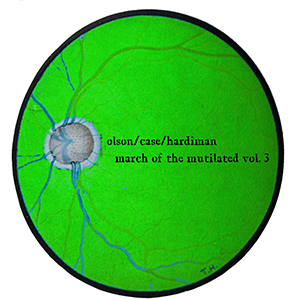
Volume 3, recorded on the eve of Christmas Eve, 2017, features the trio bringing a lot of new toys to the session in comparison, and the four lengthy parts really reflect this change in direction.There is less of a jazz heavy feel right from the start:a mass of plucked and scraped strings from Hardiman's guitar conjures up some free improv moods.What sounds like crickets far in the distance may be electronics, or may be actual field recordings, and Case brings in a distant electronic rattle.There is still a good deal of restraint, but the complexity builds, and some percussive aspects and noisy scrapes are blended with Olson's reeds coming in quietly.By the end, they link into a simple but effective melodic progression that solidifies as a brilliant bit of horror film score tension.
The reeds and woodwinds continue into the second part, but here they are less tense overall and instead, with the full arrangement, comes across like a deconstructed, abstract take on a spaghetti western soundtrack.The electronics take on a metallic edge, percussive bits build, and the pained sax and horns squeal through violently, resulting in something not far removed from some of Wolf Eyes' best moments, albeit reduced to the barest essentials.By the third segment the expansive twinkling electronics and rattling guitar take the focus, and when Olson’s horn starts in concert with Hardiman's guitar, it is a brilliant bit of chaotic free improvisation.The final segment nicely ties things together and brings the feel back to the previous installments of the series.Wheezing wind instruments and far off electronics pair together, with improvised percussion subtly punctuating the entirety of the piece.There may be a few outbursts towards the end, but the trio tie things up on an excellent note, nodding to not only the previous sessions on the disc, but their entire body of work.
With the addition of guitar and more electronics on Volume 3, it is clear that Jeff Case, Eric Hardiman, and John Olson still have much more in reserve for these holiday jam sessions.I personally appreciated the way that the second volume continued nicely from the first, but by the third the trio were going on a very different trip, with varied instrumentation and playing styles.It makes for a series of recordings that seriously just keep getting better and better, and I have my fingers crossed that, in a cold Albany basement between Thanksgiving and Christmas of this year, these guys will be throwing down at least a fourth volume.
samples:
 
Read More
- Administrator
- Albums and Singles
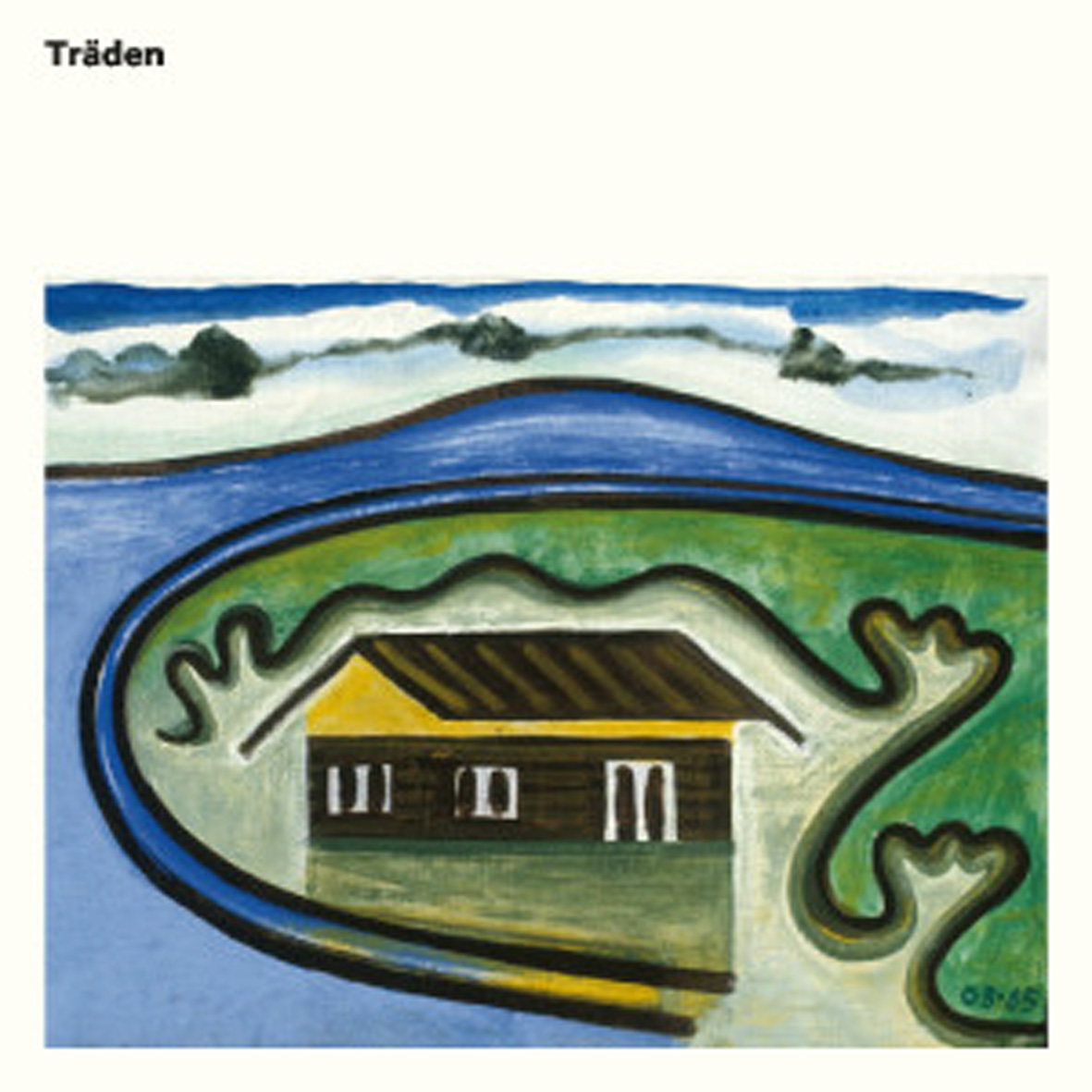 It seemed like last year's Tack För Kaffet / So Long was the bittersweet swansong for a shape-shifting creative force that brought the world so much timeless psychedelia, but a handful of the participants from that album have now surfaced anew. Of Träden's four members, only founding guitarist Jakob Sjöholm remains from Träd, Gräs Och Stenar's original line-up, yet this latest incarnation feels like the natural next chapter for an entity that has always been fairly loosely defined. While there is nothing particularly ambitious or revelatory on this album, this new foursome prove to be especially adept at crafting warm, fluid, and unpretentious music that perfectly evokes the quiet pleasures of a handful of talented friends comfortably jamming and bouncing ideas off of one another in a countryside studio. Some of those jams ultimately turned into very good songs, of course, but the real magic of Träden is that the band feels free, sincere, casually experimental, and joyful in a way that is rarely heard these days.
It seemed like last year's Tack För Kaffet / So Long was the bittersweet swansong for a shape-shifting creative force that brought the world so much timeless psychedelia, but a handful of the participants from that album have now surfaced anew. Of Träden's four members, only founding guitarist Jakob Sjöholm remains from Träd, Gräs Och Stenar's original line-up, yet this latest incarnation feels like the natural next chapter for an entity that has always been fairly loosely defined. While there is nothing particularly ambitious or revelatory on this album, this new foursome prove to be especially adept at crafting warm, fluid, and unpretentious music that perfectly evokes the quiet pleasures of a handful of talented friends comfortably jamming and bouncing ideas off of one another in a countryside studio. Some of those jams ultimately turned into very good songs, of course, but the real magic of Träden is that the band feels free, sincere, casually experimental, and joyful in a way that is rarely heard these days.
Given that everyone in Träden except drummer Hannah Östergren was involved in Tack För Kaffet, it is no surprise that the opening "När Lingon Mognar" picks up right where that album left off, unfolding as a languorously droning groove embellished with chant-like vocals and a lazily winding and smoldering guitar solo that casually comes and goes.It is one of the better songs on the album, but it is not particularly representative of what follows.That elusive aesthetic highlights one of Träden's most endearing qualities, as they are singularly laidback and non-dogmatic in their approach to sun-dappled psychedelia.That organic, unhurried, and loose-limbed vision is admittedly something of a double-edged sword, occasionally resulting in indulgently meandering vamps like the 11-minute "Tamburan," but it seems like a necessary foundation to the band’s successes as well, most of which occupy the album’s more fleshed-out second half.The understated bass-driven groove of "Kung Karlsson" is yet another lengthy vamp on a single, unchanging motif, but the following "Å Nej (Oh No)" sounds like a charmingly woozy and ramshackle reimagining of Ringo Starr's "No No Song." That is one of the absolute last things I would expect from a legendary psych band, but it fits comfortably into the "anything goes" eccentricity that this milieu has always embraced. Also, it is extremely endearing that Träden do not take themselves particularly seriously and can seamlessly shift from tormented, blown-out guitars to infectiously kooky pop weirdness and back again.
While it is not exactly the most heavyweight material, "Å Nej" is the first in a three-song stretch of Träden's strongest work.For example, "OTO" is the best of the album's instrumental vamps, as its trance-like, slow-motion reverie provides the perfect backdrop for a dreamily lysergic feast of tenderly shimmering, sliding, and moaning guitars.The mournful "Hoppas Du Förstår (Hope You Understand)" that follows is similarly tender, feeling like a bittersweet elegy for a lost friend or love.Unlike most of the album, it is tightly structured and melodic.Also, it replaces the omnipresent electric guitars with some gorgeously soulful esraj playing from Reine Fiske.The album then winds to a close with a pair of fine guitar showcases.The first, "Hymn," is another one of the band's slow-motion vamps, but Sjöholm and Fiske weave an especially beautiful and simmering web of intertwining arpeggios and fragments of melody.It is actually one of the more overtly experimental pieces on the album as well, as there are some buried field recordings and shuddering, effects-ravaged chords that sneak into the mix as it slowly builds.The final piece is even more of a surprise, as "Det Finns Blått (There Is Blue)" rolls along with a relentlessly purposeful momentum as gnarled and strangled guitars twist and snake around the moaning vocals. It sounds weirdly menacing and uncharacteristically fiery when compared to the rest of the album and is the second of the two pieces Sjöholm wrote for the album.The other was album highlight "Hoppas Du Förstår," which I suppose means that he is the intense, beating heart of the ensemble.I wish he took the reins more often, as he certainly writes the most striking songs, but I otherwise appreciate the album's balance of darkness and light.
There are a couple of other aspects to Träden that leave room for improvement as well, as this album is far too good to be just a comforting revival of a familiar and beloved project, yet a bit too relaxed and meandering to quite feel like a vital new entity."OTO" aside, all of the best pieces seem to be those in which someone is actually credited as a songwriter, rather than those that arose entirely from a full-band jam.In fact, two of the best songs appear to be covers: "När Lingon Mognar" was originally recorded by Harvester, while "Å Nej" was written by Blå Tåget‘s Mats G. Bengtsson.While Träden have a wonderful improvisatory chemistry, it definitely seems like their jams take a more focused and compelling route when they start from an established theme.Also, they have a bit of a tendency to amiably ride midpaced grooves without doing anything to transcend that feeling of a band comfortably jamming without a higher purpose.Unsurprisingly, the band's best work tends to happen when they have a strong melody to work around or find a way to inject some needed bite or sharper edges into their soloing.That said, I still like quite a lot of this album.It may feel like a potentially great band just starting to find their direction, but they are damn good when they hit the mark.More importantly, Träden feel like a much needed corrective to a world sadly lacking the communal spirit of Europe's hippy golden age of bands like Amon Düül II, Pärson Sounds, and Träd, Gräs Och Stenar themselves.
 
Read More
- Administrator
- Albums and Singles
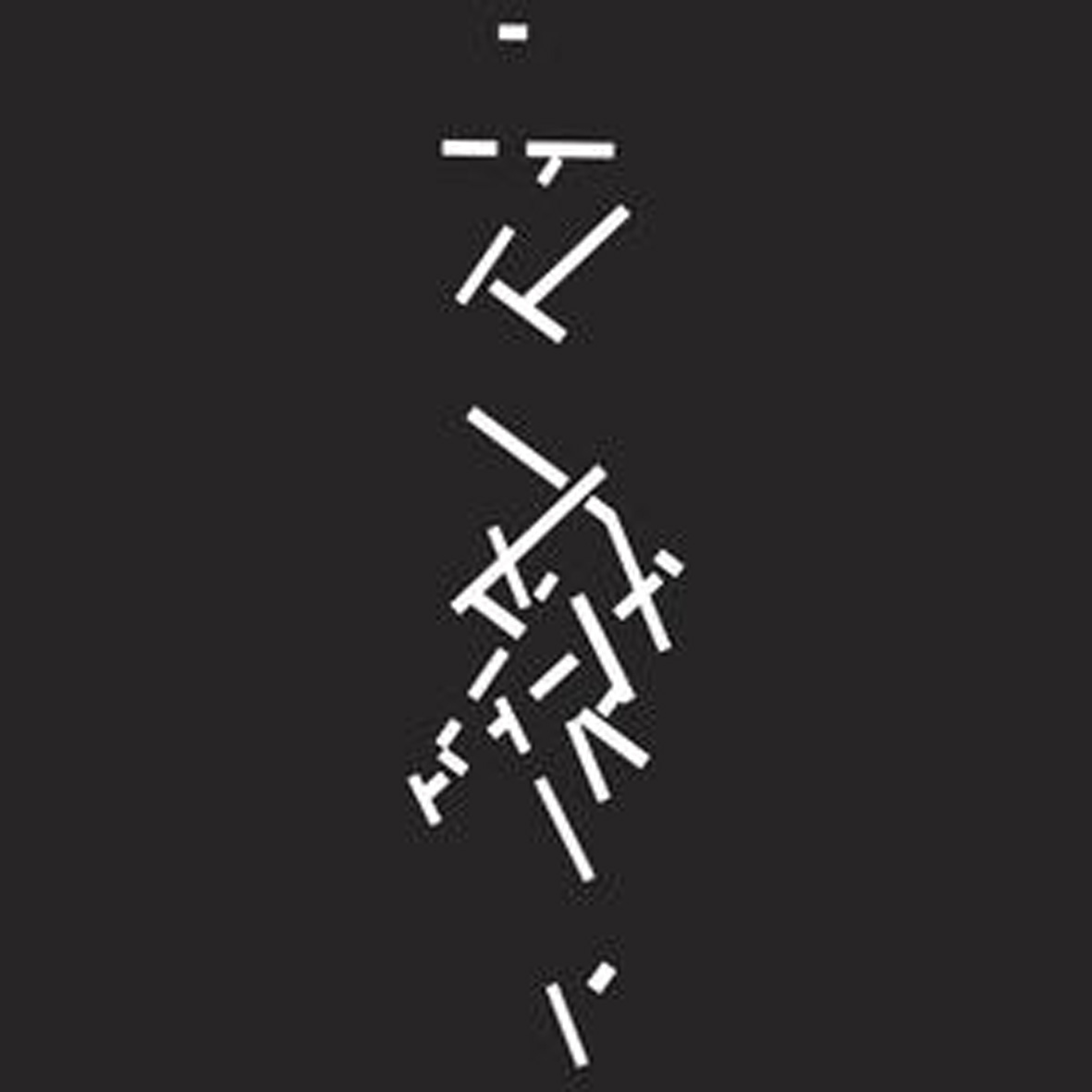 It is quite rare for me to be interested in anyone's archival rehearsal tapes, but Catherine Christer Hennix's oft-fascinating career has been woefully under-documented until only recently. In fact, this is arguably her formal vinyl debut, a milestone that improbably took more than four decades to reach. These recordings date back from 1976, when her ensemble The Deontic Miracle was performing at the Dream Music Festival in Sweden, but the album mostly features Hennix by herself playing a keyboard tuned to just-intonation. Given that these three pieces were never intended for release, it is no surprise that there is occasionally a meandering, improvisatory feel, but a few of them blossom into a wonderfully hallucinatory swirl of uneasily harmonizing overtones. Selected Early Keyboard Works is a bit more than a fine collection of unreleased material though, as it highlights a more unpolished and intimate side of Hennix's vision than her other releases. More importantly, it features one of the greatest pieces ever recorded by the La Monte Young/Pandit Pran Nath milieu.
It is quite rare for me to be interested in anyone's archival rehearsal tapes, but Catherine Christer Hennix's oft-fascinating career has been woefully under-documented until only recently. In fact, this is arguably her formal vinyl debut, a milestone that improbably took more than four decades to reach. These recordings date back from 1976, when her ensemble The Deontic Miracle was performing at the Dream Music Festival in Sweden, but the album mostly features Hennix by herself playing a keyboard tuned to just-intonation. Given that these three pieces were never intended for release, it is no surprise that there is occasionally a meandering, improvisatory feel, but a few of them blossom into a wonderfully hallucinatory swirl of uneasily harmonizing overtones. Selected Early Keyboard Works is a bit more than a fine collection of unreleased material though, as it highlights a more unpolished and intimate side of Hennix's vision than her other releases. More importantly, it features one of the greatest pieces ever recorded by the La Monte Young/Pandit Pran Nath milieu.
The decision to open this album with "Nouvelle mode des modalités" was a curious one, as there is absolutely nothing about it that would make me think that it was a Catherine Christer Hennix piece.Instead, it just feels like a lot of mid-20th century experimental and avant-garde music: a stop-start splatter of discordant, chromatic note clusters that was primarily interesting at the time because it was rejecting conventional Western modality.More accurately, it sounds like an extended electric piano solo decontextualized from a Bitches Brew-era Miles Davis live performance–throw in a weirdly lurching funk groove and some chords and it would probably be fairly enjoyably, but it just feels kind of indulgent and directionless on its own.That triggered an immediate and incorrect conclusion from me that these tapes were unrepresentative juvenalia recorded before Hennix had developed a distinctive voice (beyond a general yet deep passion for just-intonation and Eastern-influenced minimalism, at least).That conclusion initially made plenty of sense, as The Deontic Miracle were still performing pieces by La Monte Young and Terry Riley along with Hennix's own compositions at the time.However, Hennix's stellar Central Palace Music dates from the exact same period and even the second part of "Noevelle" sounds recognizably and wonderfully Hennix-ian.The difference between "Nouvelle mode des modalités II" and its predecessor is a surprisingly simple one, however, as Hennix merely switched from staccato clusters of notes to rippling flurries and added a sine-wave drone.In doing so, she shifted the emphasis of the piece from melody to harmony, something just-intonation is infinitely better suited for, as Hennix coaxes a wonderfully vibrant, shimmering, and otherworldly fantasia out of her Fender Rhodes.
The following "The Well-Tuned Marimba" is even better still, as the eerie drones of Hans Isgren's sheng weave darkly dissonant harmonies with Hennix's gently churning and glimmering web of strange arpeggios.It is easily one of the finest pieces that Hennix has ever recorded, filling the room like a murky and vaguely menacing supernatural cloud.While it only lasts for about 18 minutes, it feels like a veil has been pulled away to offer a brief glimpse of some kind of infinite, extradimensional void of cosmic horror lurking just behind the precarious façade of our reality.It is quite a glorious illusion, feeling far more like a living and hallucinatory nightmare world than a mere composition.Sometimes I forget that Hennix's work is absolutely the most visceral and disturbing of all the Pandit Pran Nath-inspired minimalists."The Well-Tuned Marimba" is a good reminder that her drone work is just one facet of a vision that can also descend into some rather dark and deliciously uncomfortable territory.The album's final piece "Equal Temperament Fender Mix" is also quite unique, if a bit less audacious.As the title indicates, Hennix changed her tuning to 12-tone equal temperament, but the subtle harmonic difference between one unusual tuning and another is more or less lost on me.To my ears, it is far more significant that she added tape-delay to her arsenal, a tool that she wields brilliantly.It sounds a lot like reverb-swathed lo-fi recording of a broken music box struggling to play a classical piano sonata, but quickly losing the thread as overlapping delays transform the piece into a bleary pile-up of stuttering and plinking melodic fragments.
Apparently, this double album is merely the first installment of a planned series of archival Hennix releases.If this is what Blank Forms was able to unearth from just early rehearsal tapes, it bodes quite well for the rest of the series.As whole, Selected Early Keyboard Works is a strong collection that illuminates an early and formative phase in Hennix’s development into a formidable and truly unique composer.As a somewhat devout fan, it was a delight for me to hear an album so radically different from her other releases, as well as was quite a pleasant surprise to discover that it was still legitimately excellent (if a bit raw).The bigger surprise, however, was that this is not an album strictly for the fans, as "The Well-Tuned Marimba" is an absolute stunner.In fact, I hereby declare it to be one of the true masterpieces of 20th century minimalism.That alone makes Selected Early Keyboard Works a significant and revelatory work.The rest of the album is just icing on the cake.
 
Read More
- Administrator
- Albums and Singles

I suspect I am far from alone in being unfamiliar with the music of Dutch composer Dick Raaijmakers, as there is not a hell of a lot of electronic music from the '18 and early '60s that has aged well. In his time, however, he was an important and pioneering figure in that milieu, performing significant electro-acoustic research and co-founding STEIM. He was also a thoughtful and inventive theorist and his ideas have proven to be a bit more timeless than his recordings. For this piece, originally commissioned by Sonic Acts, Thomas Ankersmit worked with similar tools to those that were available to Raaijmakers, but the album's true raison d'être is the exploration of holophonic sound fields. Wielding frequencies with scalpel-like precision, Ankersmit is able to trick the inner ear into conjuring new sounds that do not actually exist on the recording, transforming and evolving as the listener's spatial relationship to the speakers changes. It is a very neat trick, obviously, at times feeling like the album has physically burrowed directly into my head and started aggressively rearranging things. Ankersmit definitely would have been burned as a witch if this album had been made in earlier times.
One recurring thing that I have noticed with albums designed to trigger aural hallucinations is that the hallucinations are never, ever pretty ones like trails of shimmering colors.Rather, they tend to be far more on the infernal side of the equation, evoking something somewhere between an uneasy sense of vertigo and a nerve-jangling psychotic break from reality.Naturally, Ankersmit does not shy away from continuing that proud tradition, so it must be said that Homage to Dick Raaijmakers can be an incredibly dissonant and challenging bit of sound art during its synapse-frying crescendos.In the right hands, a modular synthesizer and some sine wave generators can be every bit as brutal as the most howling white noise assault.Unlike a harsh noise album, however, Homage has an extremely nuanced and enigmatic trajectory, seamlessly drifting from crackling, humming, and buzzing stasis into vividly textured vistas of eerie beauty or eruptions of harrowing dissonance.As such, this album feels like floating through a lysergic electromagnetic cloud that unexpectedly blossoms into one otherworldly set piece after another.The first and most beautiful such moment occurs rather early on, as a motif that sounds like an undulating chorus of malfunctioning short-wave radios dissipates into erratic sputtering, then unexpectedly re-coheres into haunting and tormented-sounding sonar pings in a gathering storm of static.It is quite a ghostly and weirdly lovely passage, but it is an elusively short-lived one destined never to repeat.
Instead, the piece morphs into a surreal miasma of electronic beeps and smeared synth tones that seems to achieve the piece's first significant holophonic moment, feeling like the air around me has become kind of a living and claustrophobia-inducing fog.After that, the album seems to plunge into the ocean's depths for a while, settling into a deep, submerged-sounding throb ravaged by bursts of electrical interference and violently shifting tectonic plates.At its peak, the cacophony is not unlike Merzbow, as Ankersmit gamely unleashes a howling onslaught of searing and splattering destruction.Unlike Merzbow, however, that caustic blizzard is actually a comparatively more listenable passage that eventually gives way to something far more bizarre and uncomfortable.It is fascinating how the blunt force of the piece has almost an inverse relationship to its heaviness, as the oscillating swirl of deep drones that follows feels like it is bending and warping reality in a sickly and unnerving way.After that, the album only grows stranger, dissolving into a brief void of sustained whines and the illusion of skipping, mangled tapes of field recordings (and possibly some kind of large, psychedelic owl).That, of course, is the calm before the storm, leading into an unhinged and buzzing crescendo of sanity-eroding whines.Its power is weirdly sneaky and cumulative, as it feels like I am surrounded by high-tension power lines that all seem to be emitting similar frequencies…but not quite the same frequency, resulting in a relentless and inescapable cloud of oscillating, dissonant harmonies that lasts for an uncomfortably long time.In some ways, it definitely feels like an endurance test, but it also feels like the air itself is shivering and alive and the sensations subtly shift as I move and tilt my head.In fact, it almost becomes meditative once I start to become numb enough to the dissonance to appreciate the spectral layering.
Obviously, such passages can be quite a rough ride and Homage is not particularly conducive to passive, casual, or frequent listening, but I genuinely appreciate how Ankersmit seems to revel in the more uncomfortable passages.Genuinely experimental sound art should hurt a bit if it is done right and Ankersmit does it exactly right.I am actually surprised at how rare albums in this vein seem to be, as previous generations took care of all the research needed to weaponize frequency manipulation, yet virtually no one seems to make use of their findings.And those that do seem like goddamn sorcerers.I grasp that psychoacoustics is a cerebral and complex field, but understanding it essentially adds an entirely new dimension to sound and it is an extremely cool one (not at all like the difference between 2D and 3D film).On a related note, it would be very easy for an album in this vein to turn out quite bloodless and academic-sounding in the wrong hands, so I am also impressed with how skillfully that peril is avoided here.There are certainly some aesthetic nods to early electronic music, as Ankersmit adapted Raaijmakers approach of treating music as more of a "weather system" than a structure of melodies and harmonies, but the palpable aural phantasms that he conjures up are very compelling, very visceral, and very contemporary.
Read More
- Administrator
- Albums and Singles
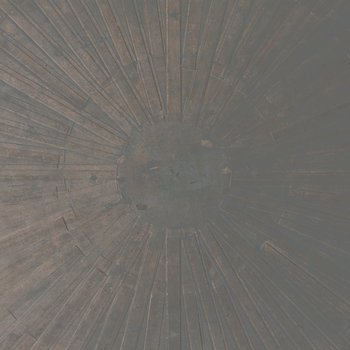
For over half a decade, William Basinski and Lawrence English have been in regular contact with one another. During that time their paths have crossed repeatedly in various cities; Zagreb, Los Angeles, Hobart and more, in a variety situations. It was from these chance encounters – and the strange familiar of lives lived in transit – that their first collaboration, Selva Oscura, was seeded.
The phrase Selva Oscura draws its root from Dante’s Inferno. Literally translated as "twilight forest," it metaphorically speaks to both those who find themselves on the unfamiliar path and more explicitly the nature of losing one's way in place and time.
Each of the extended pieces on this record maps an acoustic topography that draws on the concept of drifting into the strange familiar. The works each dwell in an ever shifting, yet fundamentally constant state of unfolding. As one sound fades away, another is revealed in its place, creating a sense of an eternal reveal.
Selva Oscura was recorded in Brisbane and Los Angeles simultaneously. The compositions were each created through a process of iteration and rearrangement that inverted the micro and macro characteristics of the raw sonic materials. Dynamics and density were chiseled with restraint and at other times intensely reductionist approaches to create a limitlessly deep, but open sound field – as rich as the suggested place from which its title is drawn.
Selva Oscura is dedicated to Paul Clipson, a close friend of both William and Lawrence, and whose work celebrated the wonder that is becoming lost in experiences that lie in excess of our everyday understandings.
More information can be found here.
Read More

